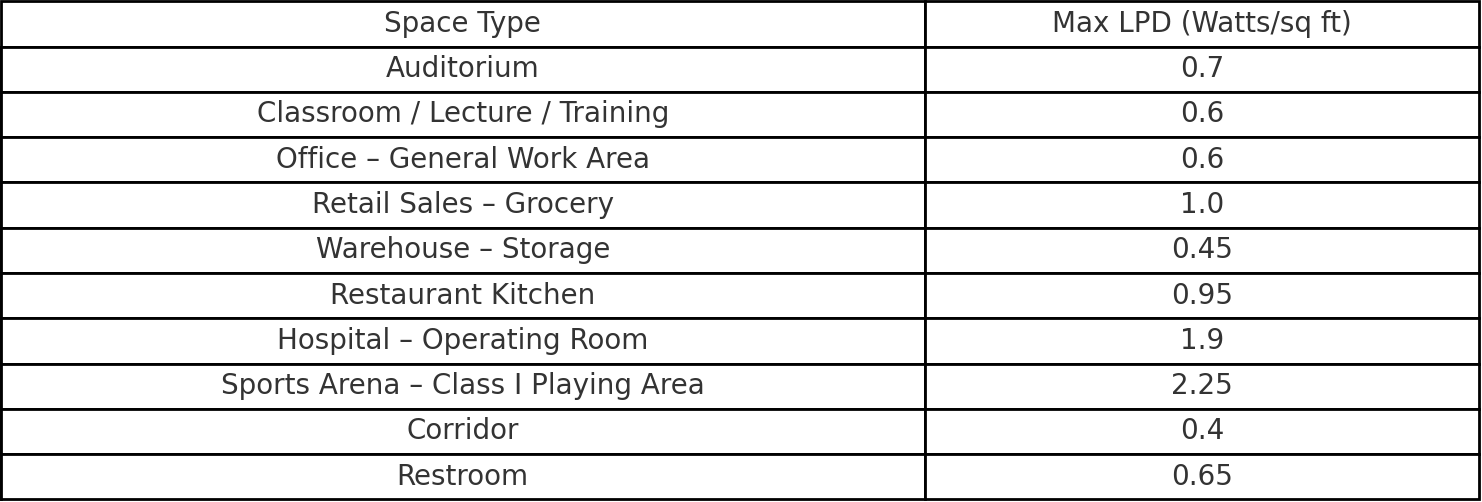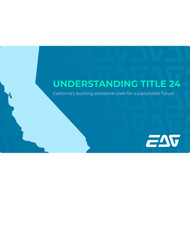What to Know About California Title 24 for Restrooms
If you're building or upgrading commercial restrooms in California, Title 24 compliance isn't optional, it's part of the job. These energy efficiency standards apply to everything from lighting output to occupancy sensors, and enforcement is only getting stricter.
Restrooms are often treated as afterthoughts in planning phases, but they come with specific requirements under California’s Building Energy Efficiency Standards. Miss them, and you're looking at delays, failed inspections, or costly retrofits. Whether you're managing facilities, overseeing construction, or handling procurement, understanding what Title 24 expects in restroom spaces helps keep your project moving and your building up to code.
What Is Title 24?
California Title 24 refers to the state’s Building Energy Efficiency Standards; a set of regulations designed to reduce energy use in residential and nonresidential buildings. The standards are updated every few years by the California Energy Commission and are enforced at both the local and state levels.
For commercial buildings, Title 24 touches nearly every system that consumes energy, including lighting, HVAC, and water heating. When it comes to restrooms, the focus is on lighting controls, power consumption, and how spaces respond to occupancy.
That means even a single-user restroom in a retail space or office must meet specific code requirements, not just in terms of the fixtures you install, but also how those fixtures are controlled. From light levels to motion sensors, Title 24 outlines the minimum performance criteria to ensure restrooms use energy only when needed.
Core Title 24 Requirements for Restrooms
Restrooms may be small spaces, but under Title 24, they carry a clear set of performance expectations. Here’s what California code requires for lighting and controls in these areas:
Lighting Standards
All installed lighting must meet high-efficacy criteria, meaning fixtures must deliver more light per watt and meet strict efficiency thresholds. Title 24 also limits lighting power density (LPD), capping how much wattage can be used per square foot.
Sample LPD Limits (Watts/sq ft) based on the Area Category Method

Occupancy Controls
Restrooms must include automatic shutoff controls to ensure lights aren’t left on when the space is unoccupied. In most cases, this means:
- Occupancy sensors that automatically turn lights on when someone enters and off shortly after they leave.
- For single-user restrooms, vacancy sensors are often required, which need to be turned on manually but shut off automatically.
- Multi-stall restrooms typically need sensors that control general lighting zones and ensure full coverage.
Daylight Controls (When Applicable)
If the restroom has windows or skylights providing natural light, daylighting controls may be required. These sensors reduce electric lighting when enough natural light is available, helping maintain compliance with energy-use caps.
Getting these elements right isn’t just about meeting code - it’s about building smarter, more efficient spaces that avoid last-minute change orders.
Other Codes to Keep in Mind
While Title 24 focuses on lighting and controls, it’s not the only regulation affecting commercial restroom builds. Fixtures like hand dryers, faucets, and toilets (with flush valves may not fall under Title 24, but they’re still subject to CALGreen and the California Plumbing Code.
For example, CALGreen encourages the use of energy-efficient hand dryers and mandates low-flow water fixtures in most commercial settings. Public faucets, toilets, and urinals must meet strict flow-rate limits to reduce water waste. Sensor-operated fixtures also need to comply with timing and shutoff standards.
Bottom line: meeting Title 24 is only part of the compliance picture. Staying aligned with all applicable codes ensures your restroom design passes inspection and performs as expected over time.
Design and Installation Considerations
Getting a restroom to meet Title 24 requirements isn’t just about buying the right fixtures - it comes down to smart planning during design and proper coordination during installation.
Sensor Placement Matters
Occupancy and vacancy sensors must be positioned to detect motion effectively across the entire space. In multi-user restrooms, coverage zones need to account for stalls, sinks, and entryways to avoid false shutoffs or wasted energy.
Manual Control Access
Where manual-on or partial-on controls are required, switches need to be accessible and intuitive for users. This includes ADA compliance and clear visibility near entry doors.
Retrofit Challenges
Upgrading older restrooms for Title 24 can be tricky, especially in buildings with outdated wiring or limited ceiling access. In these cases, integrated lighting-and-sensor packages can streamline compliance without a full electrical overhaul.
Fixture and Control Pairing
Not all fixtures work seamlessly with all control systems. It’s important to verify compatibility between lighting types (like LED panels or troffers) and the sensors or dimming systems you plan to use. Pre-vetted product bundles can reduce guesswork and simplify code alignment.
Final Thoughts: Code Compliance with Confidence
Title 24 plays a big role in how restrooms are lit and controlled, but it's not the only code you need to account for. CALGreen and the California Plumbing Code set clear standards for water-saving fixtures, sensor-activated faucets, and other equipment commonly used in commercial restrooms.
If you're planning a renovation or new build, it’s important to consider how low-flow faucets, compliant flush valves, and hands-free accessories support both performance and code alignment. Berl’s Commercial Supply stocks a wide range of high-efficiency restroom products that help meet today’s building standards without sacrificing durability or usability.

